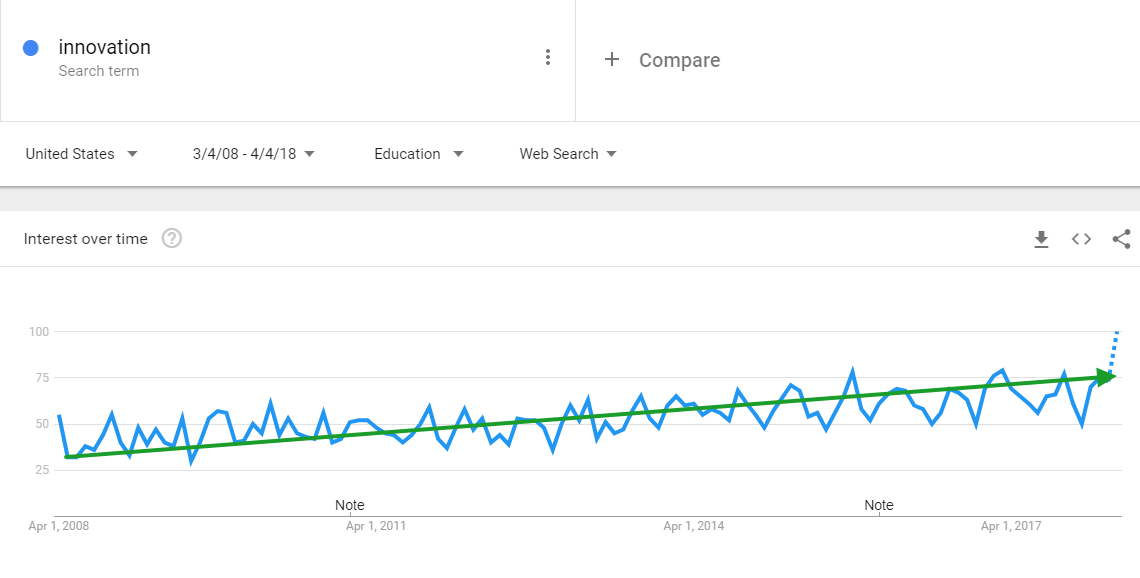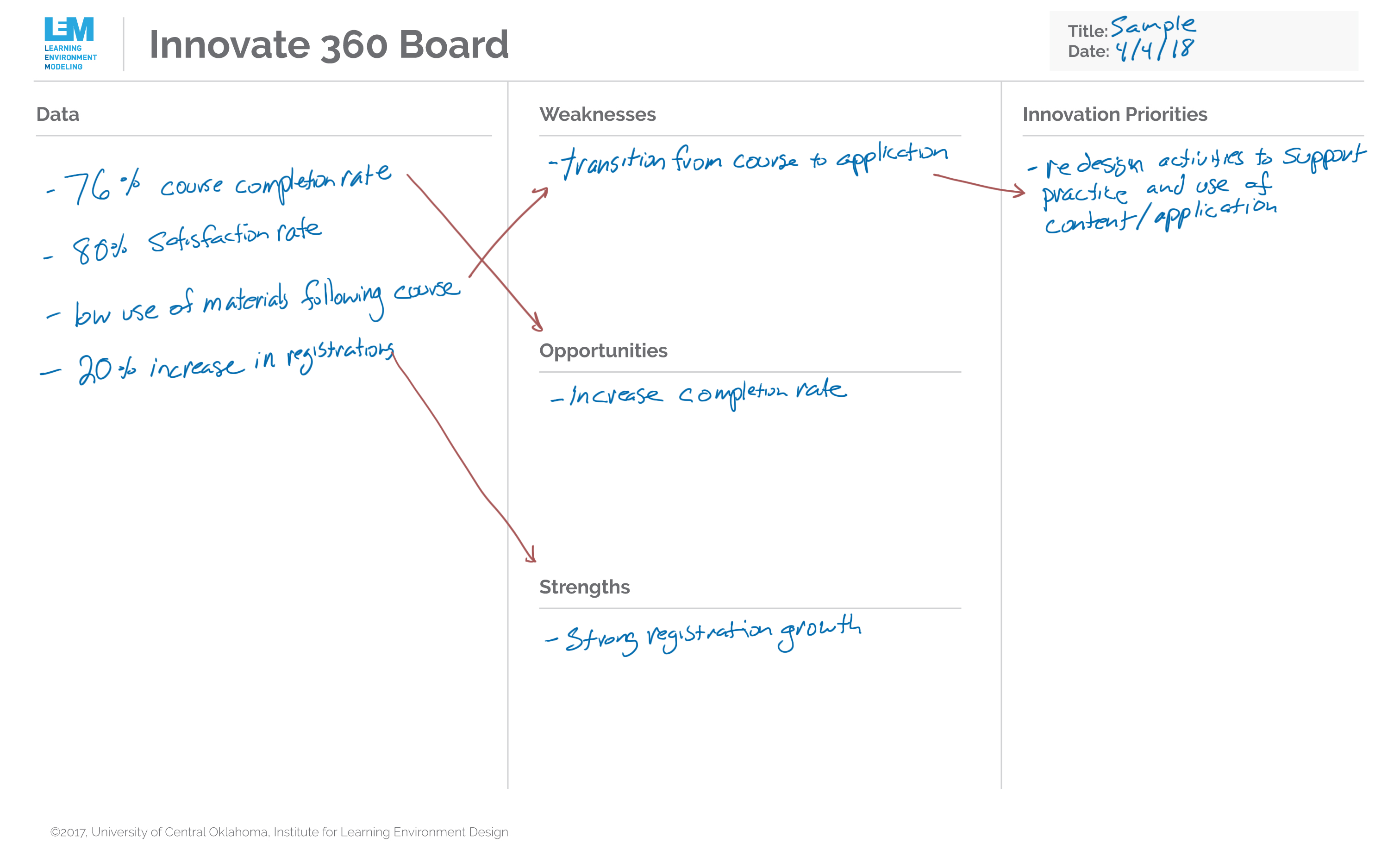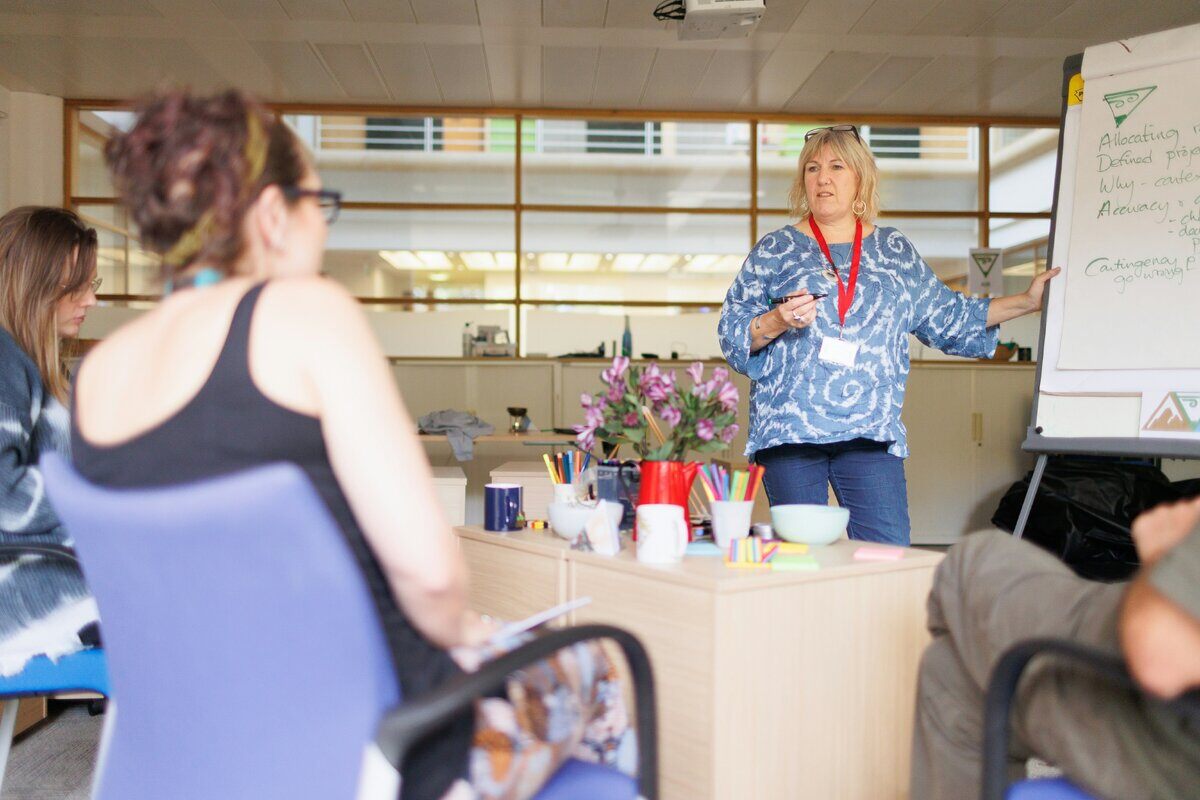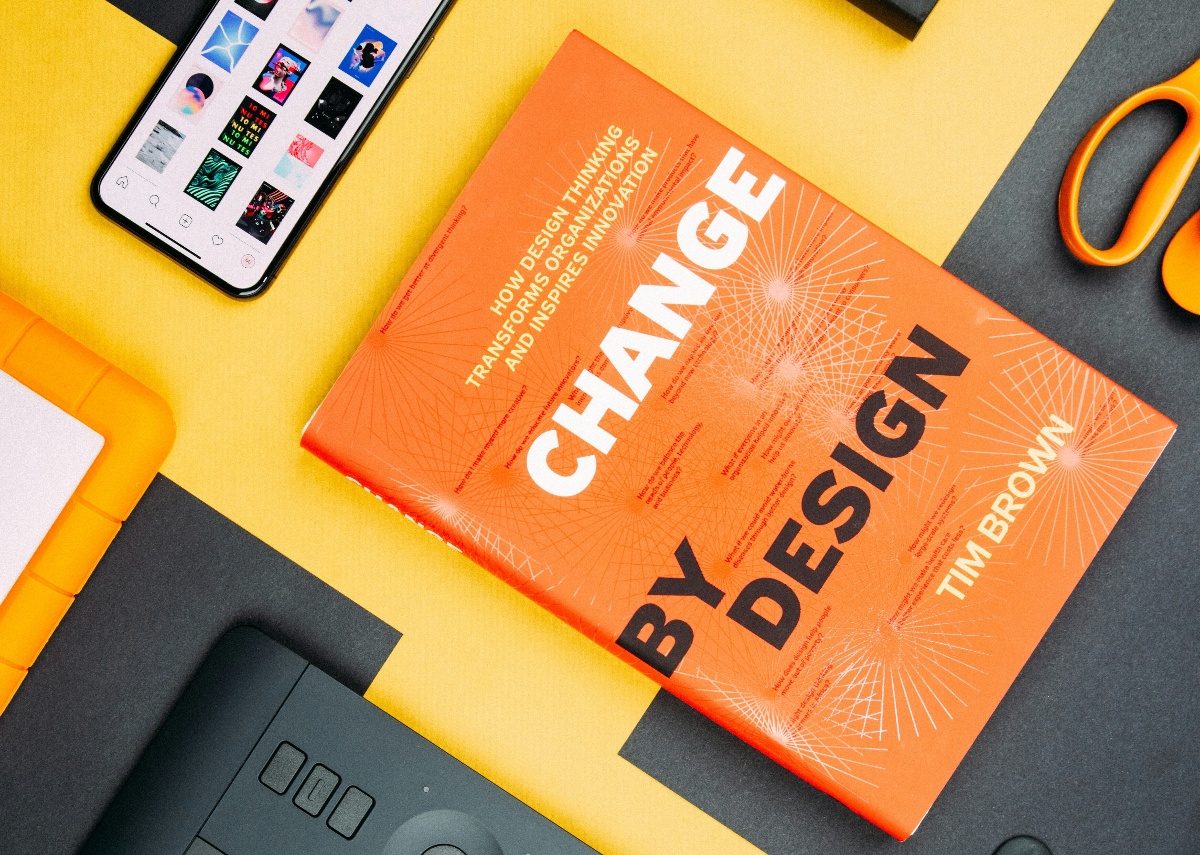
The Critical Questions of Learning Environment Design – Part IV
In this post I am wrapping up a series of thoughts exploring four critical questions presented by Jackie Booth in the Learning Solutions article titled “Why Instructional Design Matters in eLearning”. These questions should be considered essential elements of any learning environment. In adding to the discussion on these four questions, I have selected visualization tools that help designers work through and answer these four critical questions.
In Part I, I explored ways to connect with the needs and experiences of learners. Part II examined the question: “What knowledge or skills should the learner know or demonstrate at the conclusion of the program?” Part III identified considerations for planning effective methods for supporting learning.
In Part IV of this series, I look at considerations for evaluating learning programs to support continuous improvement and innovation.
The Connection Between Learning and Innovation
“Creativity is thinking up new things. Innovation is doing new things.” – Theodore Levitt
The term “innovation” seems to be a buzzword connected to just about everything. Investigating the use of the term “innovation” in U.S. education shows a steady increase in the term’s interest over the past 10 years. The professional appeal of innovation in education and learning is clearly present.

Source: Google Trends
On a more micro level, innovation can have positive and valuable influences for the design of learning environments. Learning (and the environment where learning happens) is not static. In fact, learning is supposed to produce some type of change in skill, mindset, or knowledge.
However, many learning environments are designed as ridged systems that lack the type of dynamism to support meaningful learning experiences. For this reason, we need to connect the role of evaluation of learning to the continuous process of innovation. Evaluation is limited without the commitment to do something with those insights.
The Innovate 360 Board
In working with teams from both public and private organizations, I’ve found one of the most common challenges almost everyone encounters is knowing where to focus and begin innovation efforts. The challenge is almost never a lack of ideas. Instead, the challenge is which ideas will produce the greatest results.
The Innovate 360 Board is a visualization tool created to help designers prioritize their innovation efforts and resources. This visual tool connects data, features, and priorities of learning environments. This approach embeds the process of evaluation of learning within a commitment to innovation.

In this example, the Innovate 360 Board is used to display data about a learning environment. This data is then used to identify weaknesses, opportunities, and strengths. Finally, these insights are organized as innovation priorities based on available time, resources, and will. This example shows a single innovation priority based on a series of data and insights.
Summary
Evaluation and innovation of learning should go hand in hand. Without insights, innovation is blind. Without innovation, evaluation and insights are meaningless.
This post concludes a four-part series on critical questions that inform the design of learning environments. In this post, I examined the role of evaluation and how to use visualization tools to connect insights to innovation.
For more information and resources…
For more information and resources on using visualization to support instructional design, visit http://iled.uco.edu.
Subscribe To Our Blog
Most Popular
Post By Topic
- associations (2)
- blended learning (2)
- CLEA (3)
- community of practice (1)
- Continuous Improvement (1)
- covid (1)
- culture (1)
- customer engagement (1)
- Design Studio Session (7)
- designcast (2)
- E-Learning (2)
- engagement (1)
- equity (1)
- ILED (6)
- ILED Designcasts (4)
- Innovation (4)
- learning design (25)
- learning enviroments (21)
- learning innovation, (4)
- Learning Strategy (7)
- LEM Techniques (3)
- micro-credential (17)
- Powered by LEM (5)
- professional learner (2)
- Show Notes (4)
- Skills Gap (2)
- technology (3)
- Uncategorized (11)
- video (1)
- visualization (10)
- Workshops (1)





